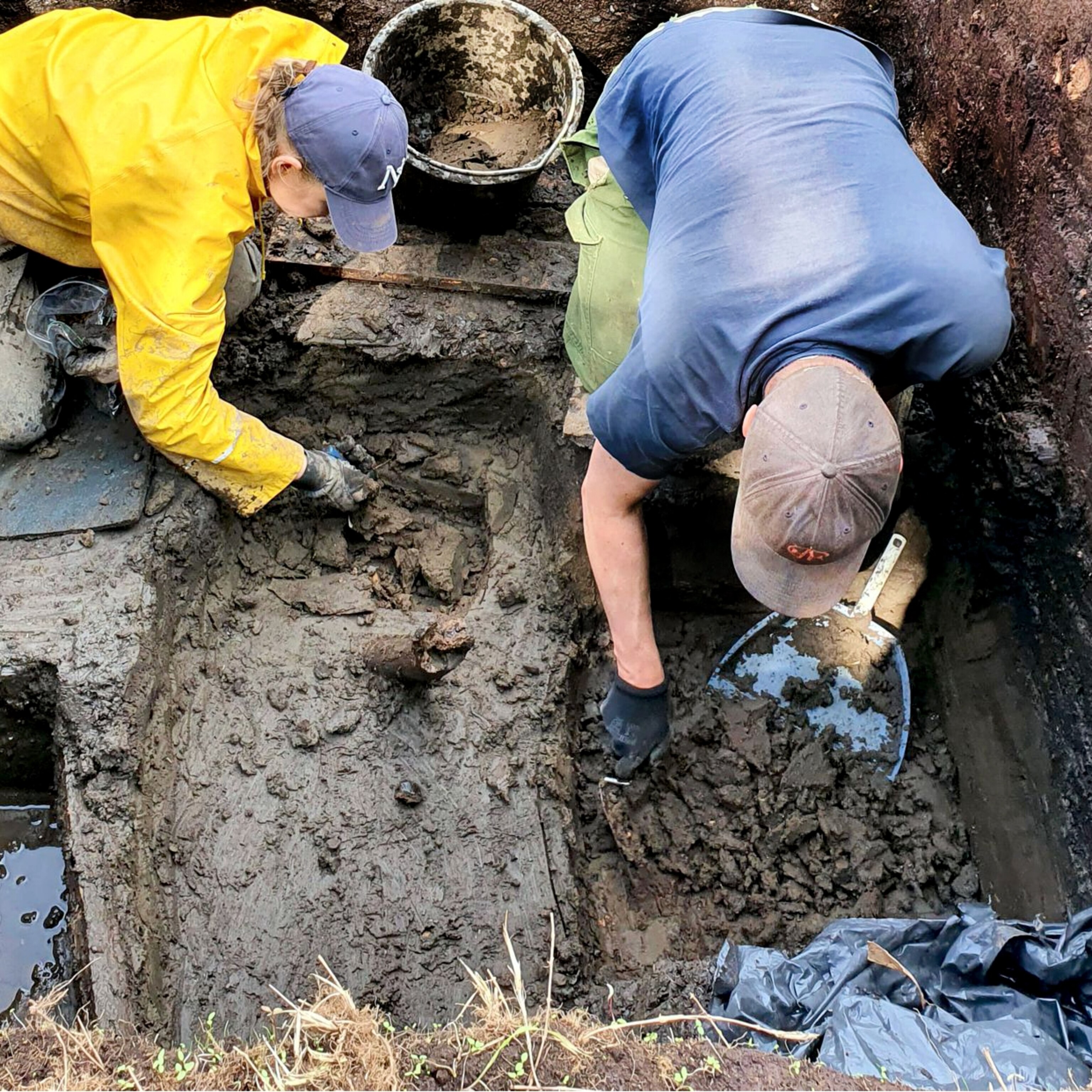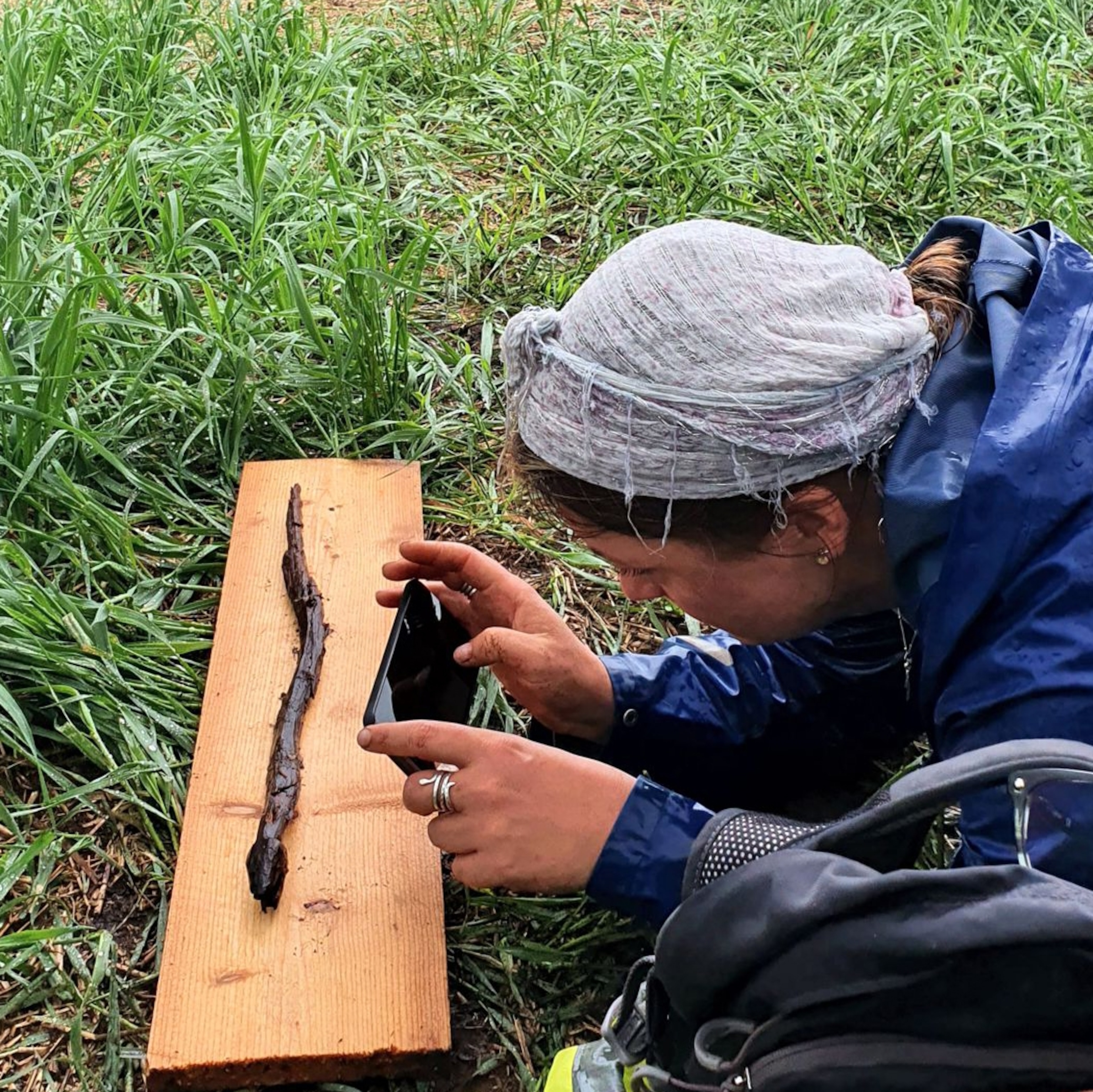
Sinuous Stone-Age snake sculpture unearthed in Finland
Scientists are trying to understand the meaning and purpose of the unique discovery, which comes from the site of a 4,000-year-old lake shore.
Snakes have been feared, revered, and depicted in art throughout human history—whether in the pantheon of Egyptian or Aztec gods, or the ancient snake goddesses of India and the Mediterranean.
Now, the latest addition to the world’s gallery of ancient snake art comes from the waterlogged fields of Finland.
The unique, 4,000-year-old wooden artifact was discovered last year at Järvensuo I, a site in southwest Finland that encompasses a stretch of peat and mud, according to an article published today in the journal Antiquity.
The 21-inch-long snake figurine was found roughly a foot and a half down in a peat layer at the site, lying alone on its side. Its features were carefully carved from a stick, and the artist took care to incorporate the sinuous curves of the branch to serpentine effect.
In an interview with National Geographic, Satu Koivisto, an archaeologist at Finland’s University of Turku and a lead author of the paper, described how the discovery of the unassuming artifact “gave us all shivers.”
“We were stunned,” she recalls.
The researchers note that the wooden snake figurine is a unique find for Neolithic northern Europe. While snakes fashioned from wood, bone, amber, or clay have been occasionally found between the eastern Baltic and the Ural Mountains, they are less common than figures of other creatures, such as waterfowl or elk.


An inscrutable artifact
Both the species of wood and the snake it depicts are still unidentified, but the researchers think it resembles a grass snake (Natrix natrix) or a European adder (Vipera berus).
While the snake from Järvensuo I is a masterful piece of Neolithic art, its purpose is inscrutable: Was it a child’s toy or a ritual object? Was it accidentally dropped or deliberately placed where it was found some 40 centuries later?
Koivisto notes that the location where it was found would have been a lush, marshy meadow that would have been difficult to access and traverse.
Snakes carried great symbolic weight in later Finno-Ugric and Sámi cultures in northern Europe, and shamans were believed to transform into snakes, according to the researchers.
Snakes also make an appearance in the rock art of the region, where they are sometimes shown in the hands of human figures. Whether these instances depict snake figurines like the one found at Järvensuo I, however, is impossible to say.
“There seems to be a certain connection between snakes and people,” said co-author Antti Lahelma from the University of Helsinki in a press statement. “This brings to mind northern shamanism of the historical period, where snakes had a special role as spirit-helper animals of the shaman.
“Even though the time gap is immense, the possibility of some kind of continuity is tantalizing: do we have a Stone Age shaman’s staff?”
Race against time
Following its accidental discovery by ditch diggers in the 1950s, Järvensuo I was briefly excavated in the 1980s, turning up fishing equipment, pottery, and a wooden scoop with a handle in the shape of a bear’s head. Radiocarbon dating of artifacts showed that people occupied the area between 4,000 and 2,000 years ago, when it was located on the shore of a long-gone lake.
Due to the nature of the site, many organic objects that normally would decay over time, like wood, are preserved in the peat and gyttja (eutropic mud). Human remains, however, appear to dissolve quickly in the acidic environment.
Thanks to a three-year grant from the Academy of Finland, Koivisto’s team returned to the site last year. Due to the nature of the outdoor fieldwork and the low prevalence of coronavirus in Finland, they were able to conduct work relatively normally.
Most of the artifacts discovered so far are related to fishing, including fish net floats and sinkers made of pine bark and birch bark, as well as wooden piles and stakes that were hammered into the ancient lake bottom.
The archaeologists have a final year of the grant to investigate the unique wetlands site, and it increasingly feels like a race against time.
“I was surprised how many organic artifacts we were able to recover in 2020. But farmland feels so cultivated there. There is a systematic drainage system lowering of groundwater all the time,” Koivisto observes.
“Some of the first signs of destruction in these materials is already clearly evident,” she observes. “So we don't have too much time left to do these kinds of discoveries.”




